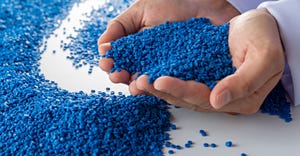Laser-welded actuator housing molded from polyphthalamide
Materials supplier Evonik has scored a success with the application of a Vestamid HTplus polyphthalamide (PPA) grade in the latest waste gate actuator series from Hella KGaA Hueck & Co. These components control the flow of gas inside turbo chargers.
August 19, 2015
Materials supplier Evonik has scored a success with the application of a Vestamid HTplus polyphthalamide (PPA) grade in the latest waste gate actuator series from Hella KGaA Hueck & Co. These components control the flow of gas inside turbo chargers.
The two-part actuator housing from Hella made from Vestamid HTplus combines high temperature resistance, good mechanical properties, and good chemical resistance. The components are welded together by laser. |
Waste gate actuators are used at a temperature of 160°C and are able to withstand the challenging ambient conditions in the engine compartment. A well-known German automobile manufacturer has been employing the actuators in its production lines since October 2014.
The actuator housing consists of a main body and a cover that are welded together using a laser. This is possible due to the different material properties of the components: the cover is made from a specially developed laser-transparent grade called Vestamid HTplus M1034, while the body is made from the laser-absorbing grade Vestamid HTplus M1634.
Laser welding reportedly has several advantages over the more commonly applied ultrasonic welding: namely no damage to internal electronic components, homogeneity, a narrow heating zone, a high welding seam strength, and no welding spatter in the housing.
Both housing components are reinforced with 40 percent glass fiber and, in addition to high temperature resistance, they are rigid and strong, possess dimensional stability, and exhibit superior chemical resistance.
The materials were supplied through affiliate Evonik Resource Efficiency GmbH (Essen, Germany), which supplies high performance materials for environmentally friendly as well as energy-efficient systems to the automotive, paints and coatings, adhesives, and construction industries, among others.
About the Author(s)
You May Also Like


